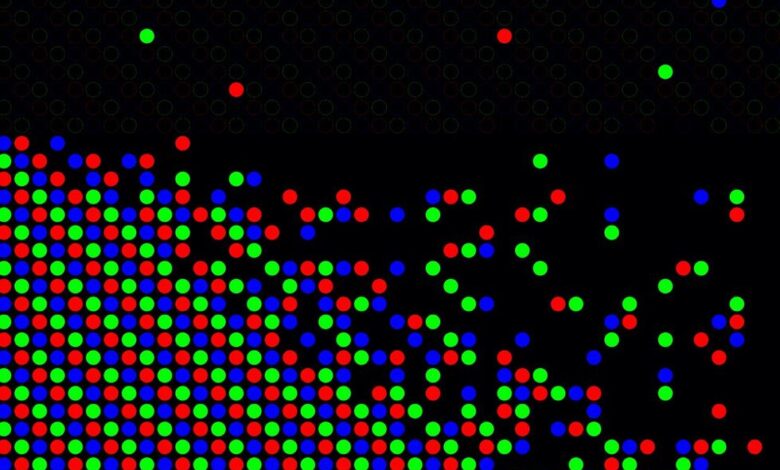Your Guide to the Newest Nobel Prize: Quantum Dots

Today, the Royal Swedish Academy of Sciences awarded the 2023 Nobel Prize in Chemistry to scientists from MIT, Columbia University and the New York-based company Nanocrystals Technology for “the development of quantum dots, nanoparticles so tiny that their size determines their properties.”
It’s a welcome development. IEEE Spectrum has been following quantum dots for nearly 25 years. Spectrum has found a host of opportunities for quantum dot stories because they’ve been game-changing in television displays, computing, optoelectronics, medicine, and more. And, to be honest, because the technology just seems magical; it literally glows.
Here’s how quantum dots impacted electronics in recent years, from Spectrum’s perspective:
In 2000, Spectrum ran a feature article (“Toward Nanoelectronics”) that touted the future directions of semiconductors and stipulated that “minuscule dots are at the heart of future transistor generations.” It continued, “Called the single-electron transistor, or sometimes the quantum dot transistor, it is under development by research groups worldwide.” In fact, no small portion of the Royal Swedish Academy’s technical backgrounder (PDF) released to the media this morning could have also been cribbed from this in-depth Spectrum consideration of nearly a quarter-century ago.
But don’t sleep on quantum dots as quantum computers’ possible salvation as well! In 2001, Spectrum delved further into at the time a nearly science-fiction emerging tech called quantum computing. Our correspondent Justin Mullins described a then-popular idea of making a “two-qubit system consisting of two electrons shared by four quantum dots in a square.” Two years after that, our correspondent Peter Fairley filed a feature story for Spectrum considering a similarly sci-fi-sounding idea of using biological viruses as the builders behind what it called “postlithography” integrated circuits. “Viral films of magnetic dots could provide the active layer for high-density quantum-dot flash memories,” he wrote.
The same year, one of the authors of this story (TSP) reported on display technology that could also be affected by quantum dot technologies—at the time, considered as the basis for quantum dot lasers that could be well suited for the environmental extremes needed behind fiber optic cables routed to the home. Six years on from that story, in 2009, Spectrum reported on quantum dot technologies for improving lighting and TV displays.
Since 2010, we’ve been tracking efforts to use the technology in image sensors. It’s not there yet, but it’s getting close.
By 2015, it became clear that the promise of quantum dots in TV displays, was about to be realized, enhancing the popular LED TVs. We explained how that would work.
We also visited a factory to see how they are made.
Meanwhile, researchers began finding applications for quantum dots in optoelectronics, potentially enabling faster computing or even quantum computing. And developers began experimenting with using them to turn windows into transparent solar panels.
Soon, medical researchers began exploring their use in cancer surgeries.
And more possible uses emerged in improving lithium-ion batteries, making plants grow faster, making solar cells more efficient, and boosting the power of antibiotics.
Lately, researchers have experimented with using quantum dots to spot deadly bacteria, and speeding up airframe inspection.
That’s as broad a range of applications as one could possibly hope for. And it’s likely just the beginning; the exploration of the power of quantum dots continues. So congratulations to inventors and now Nobel Laureates Moungi Bawendi, Louis Brus, and Alexei Ekimov—we at Spectrum thank you for sparking years of fascinating developments. The Royal Swedish Academy’s announcement today ensures that media coverage of and attention to this incredible technology will never again be tiny or negligible—however increasingly advanced and substantial these very nanoscopic devices may themselves be.
IEEE Spectrum



